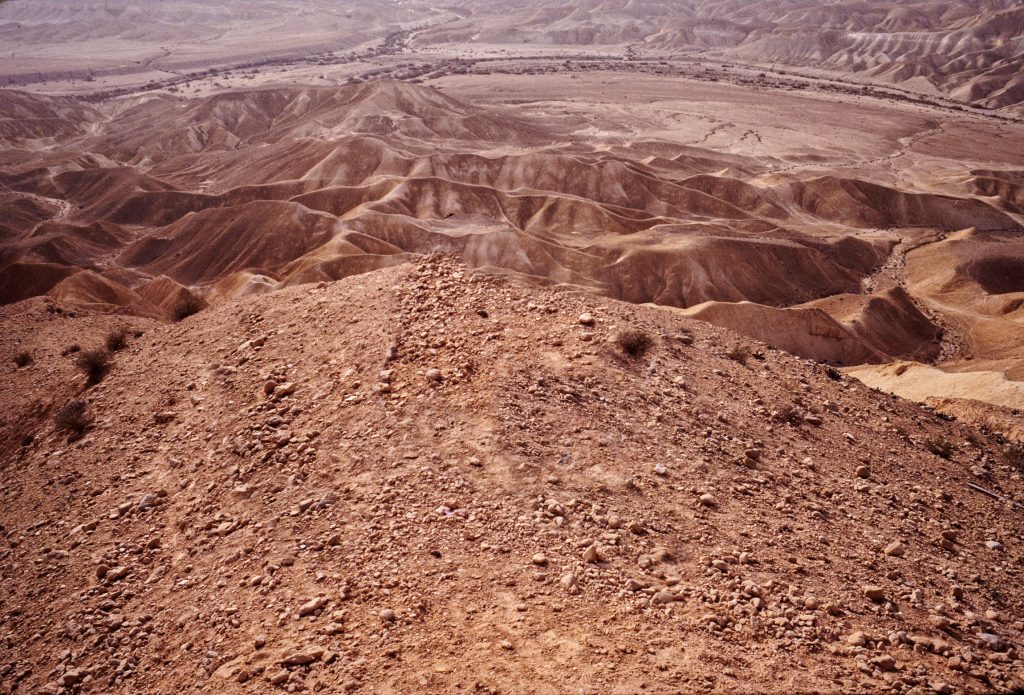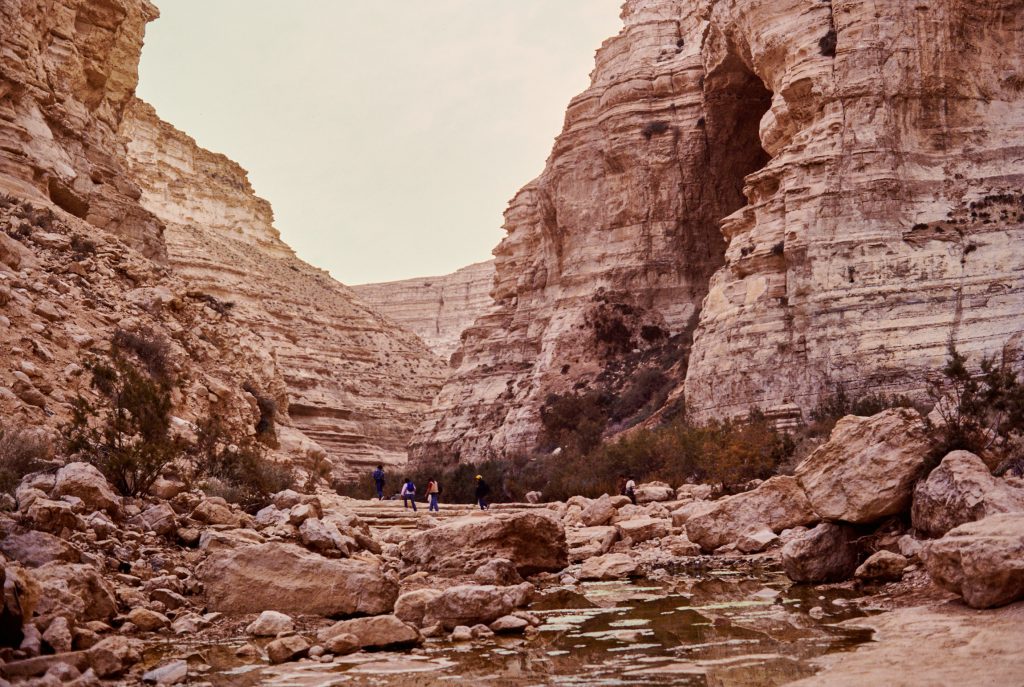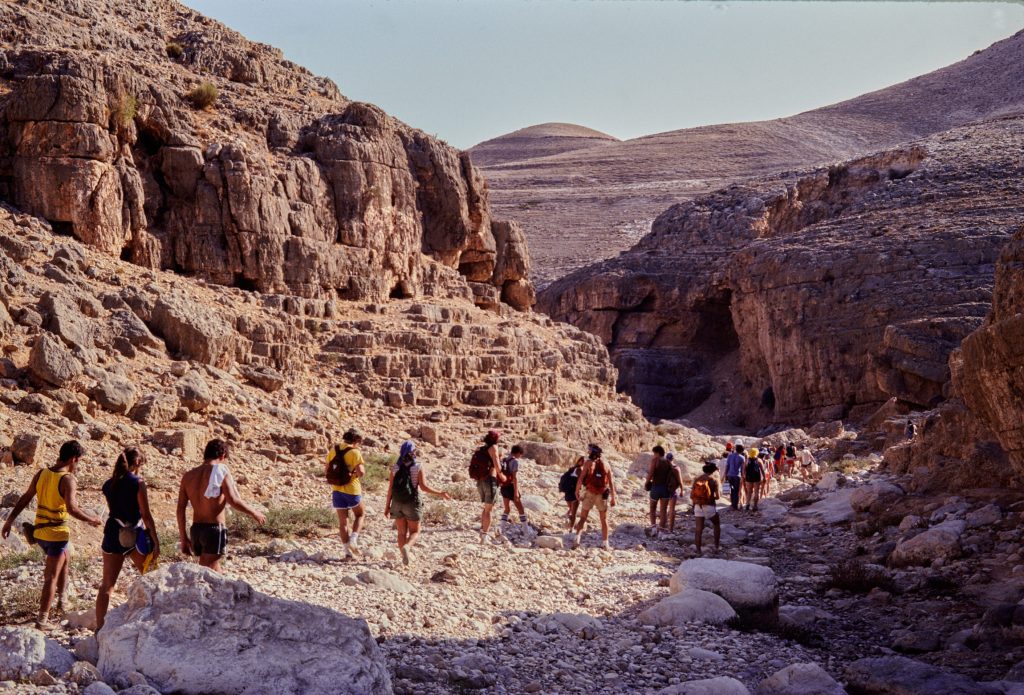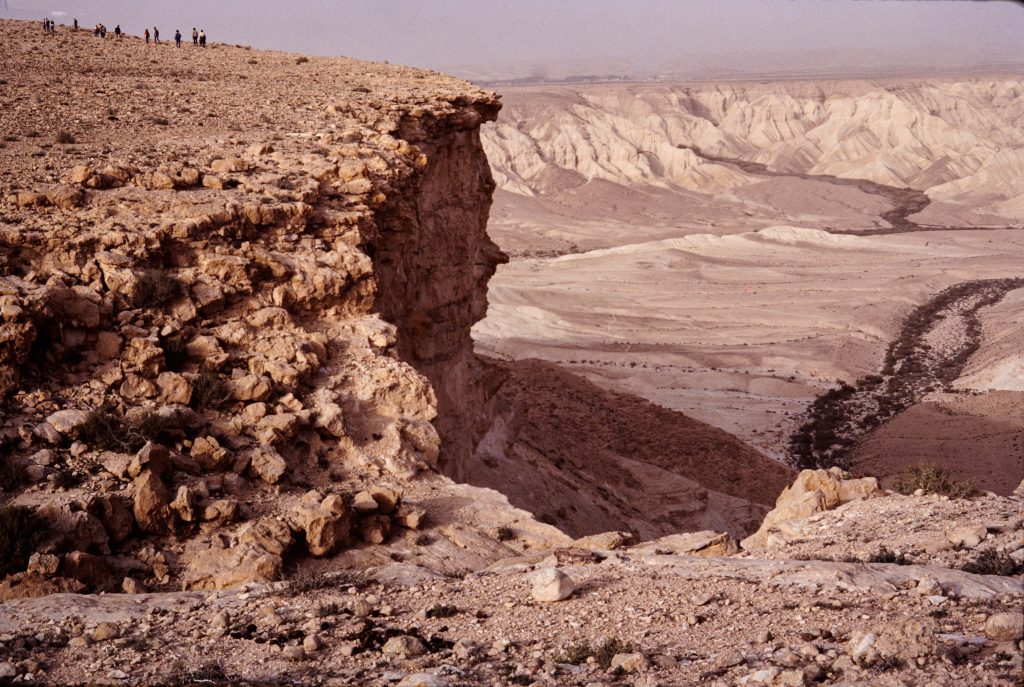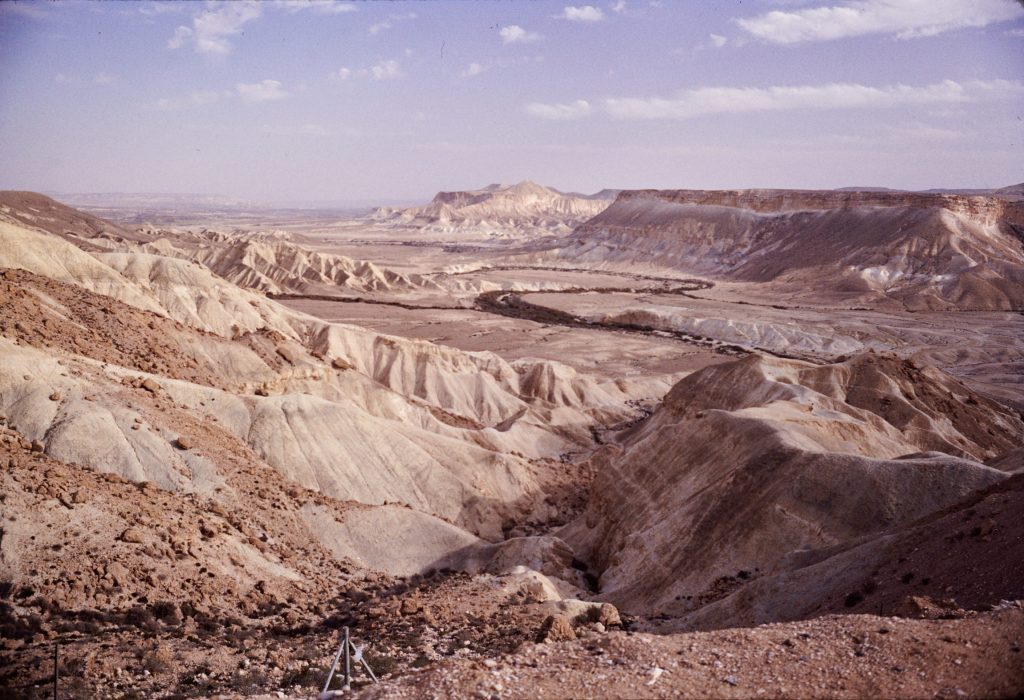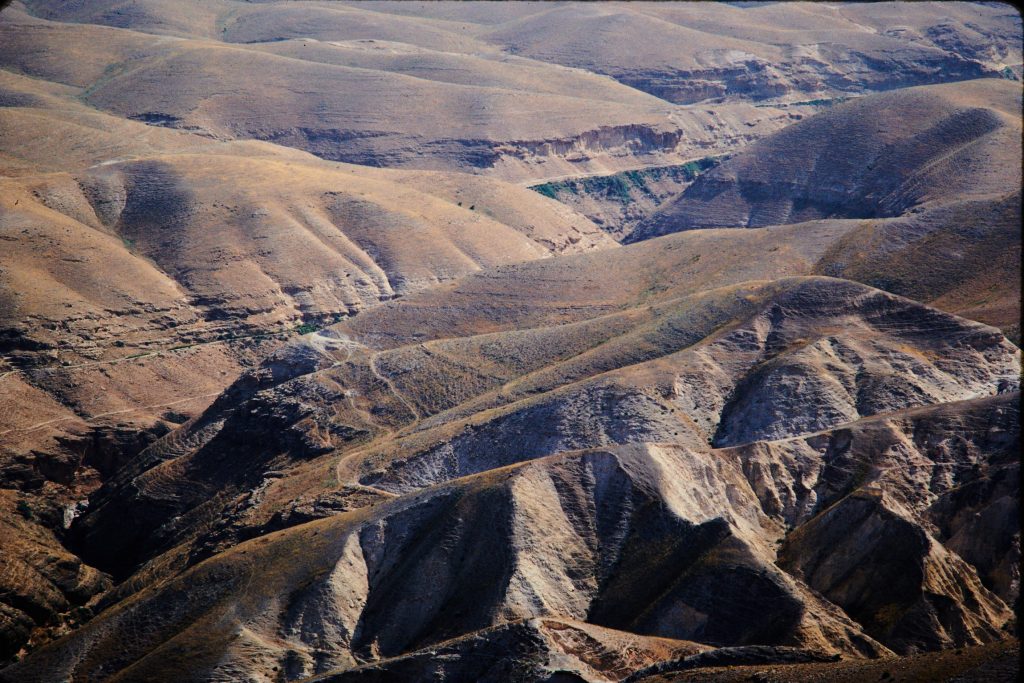There is something human about the barren and sun-scorched desert. Even a blackened desert beetle, turned on its back under the unforgiving sun, suggests a dark, poetic truth.
The Negev, of its own, holds a remarkable beauty; great panoramas of diversely carved limestone and sandstone ridges, an old seabed without the sea. Imperceptibly, as for hundreds and thousands of years, the Khamsin winds minutely sculpture the ridges. Very little changes in the barren steppe. For the human observer, only the hue of the rock adjusts to the angle of the sun, while the sly sky slips from blue to grey to blue. What I see remains unless a flash flood, over in less than a minute, rips through the valley or the toe of my boot kicks loose a stone from the hard surface. The land is baked still. The air hangs hot and heavy.

Then, as I stand high on a ridge looking over the valley towards the Dead Sea, a movement from the west intrudes on the stillness. A bird of prey floats, the great, gray wings tenderly lapping the air in long heavy strokes. Over the deep valley it moves, in a moment to dissolve into the background. I remain still, with the panorama before me as it was. Nothing tells me the bird had passed, that anything has disturbed the immutable desert. Fixed in my gaze is the desert; it remains; the bird is gone as if it didn’t exist. And I wonder, if ever it did exist.
Solitary man, fleeting humankind. And sometimes I wonder, if so does God sit on the ridge of the world.
